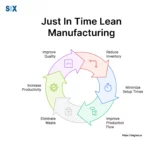The Ultimate Guide to Statistical Process Control (SPC): Mastering Quality Management in the Digital Age
The ability to consistently produce high-quality products often separates market leaders from the rest. This is where SPC comes into play. Statistical Process Control is more than just a set of charts and formulas; it’s a powerful methodology that can revolutionize how you approach quality in your organization. Statistical Process Control, or SPC, is a […]


























